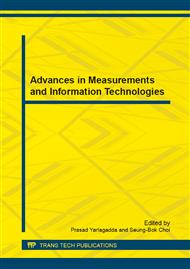p.1022
p.1026
p.1032
p.1036
p.1043
p.1049
p.1053
p.1058
p.1063
Transfer Matrix Method for Multibody Systems of TITO System Control Applications
Abstract:
Many real systems such as inertial measurement unit (IMU) in vibration environment, avionic systems in flight tests, half car dynamic model in rid comfortable test and suspension design…etc. can be expressed as Two-inputs-two-outputs (TITO) system for more realistic analysis than single-input-single-output system (SISO); but with more additional complexities. Comparing Transfer Matrix Method for multibody systems (MSTMM) with classical dynamic methods has preferences of modeling flexibility, low order of system matrix, and high computational efficiency, without necessity of deriving the system’s global dynamic equations. The need of combining control strategies with MSTMM becomes an issue of paramount importance due to that a lot of systems are considered as multibody systems, some need control to obtain higher accuracies requirement, vibration isolation treatment, …etc. As a rule of thumb the concept of designing vibration isolator in one field can be applied in many other fields. In this article a generalized TITO model is analyzed using MSTMM to deal with the vibration problem via an active isolator for both vertical translation and pitch responses. Active isolation is applied via Proportional-Integral- Derivative (PID) controller to prove the capability of formulating a relationship between MSTMM and well-known control methodologies to mitigate vibration effects. For verification purpose the analyzed model is verified using data for half car model and standard formulae for road models input excitation test. The achieved results declared that MSTMM can be combined with control techniques without need of special treatments or preconditions for different models with the advantages of MSTMM. This article allows wider developed control applications to use MSTMM simple application for more complex systems models. Dilatation in studying controlled systems using MSTMM provides a possibility for incoming control applications because of the good dealing of MSTMM with the increased complexities of multi-rigid-flexible-body problems.
Info:
Periodical:
Pages:
1043-1048
Citation:
Online since:
February 2014
Authors:
Keywords:
Price:
Сopyright:
© 2014 Trans Tech Publications Ltd. All Rights Reserved
Share:
Citation:


